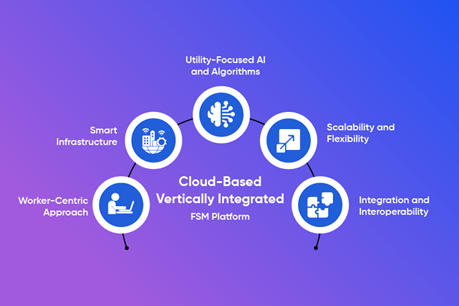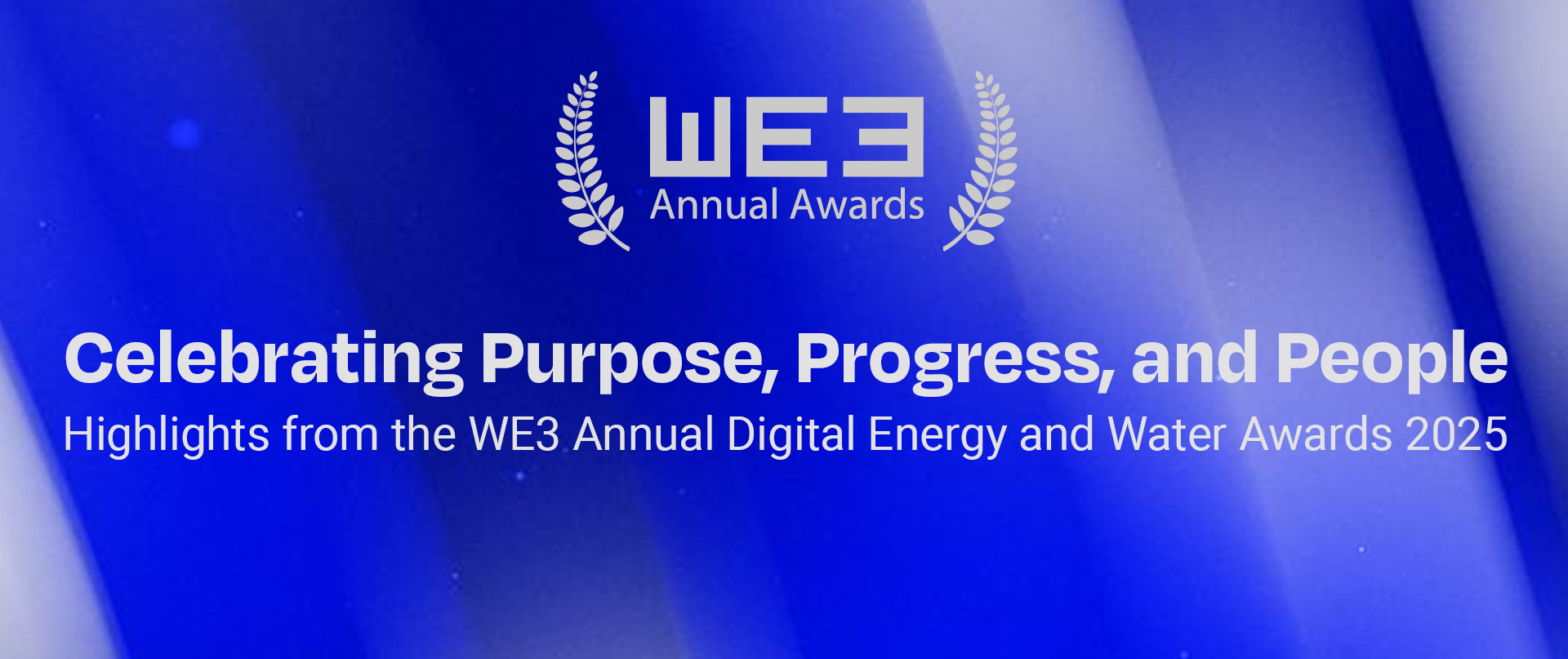Master Blog
Harnessing Cloud Technology and Vertically-Powered Platforms in Utility Field Service Management

In the current technology-driven environment, the proliferation of IoT, connected asset infrastructure, AI/ML powered platforms, and digital twins has transformed the landscape of workforce and asset management for utilities Yet, despite these innovations, many enterprises continue to rely on outdated methods such as excel spreadsheets, manual scheduling and paper-based processes.
As someone deeply involved in the utility sector, I firmly believe that digital empowerment is essential for the success of service delivery teams. One area where I've seen incredible innovation is in field service management (FSM), where cloud-based and vertical specific platforms are revolutionizing traditional approaches.
In today's environment, cloud-based FSM solutions, coupled with vertically integrated utility-specific platforms, leverage industry-specific data and workflows to significantly improve FSM processes.
These vertically powered FSM platforms offer tailored features, integrations, and insights, addressing specific industry needs that generic FSM platforms may lack, ultimately enabling organizations to optimize their field service management processes and achieve better outcomes. Designed specifically to cater to the requirements of utility operations, utility-specific FSM platforms integrate industry-specific workflows and algorithms, regulations, and best practices. This helps in providing tailored solutions to enhance operational efficiency, reduce downtime, improve service delivery, and address industry-specific challenges like evolving customer needs, field worker safety, grid complexity and more!
Designed specifically to cater to the requirements of utility operations, utility-specific FSM platforms integrate industry-specific workflows and algorithms, regulations, and best practices.
On the flip side, the integration of cloud technology into these platforms provides access to vital data from any location with internet connectivity, eliminating the need for onsite hardware. With its inherent scalability and automated update features, cloud-based architecture ensures real-time data accessibility without the need for manual intervention. Harnessing cloud technology in vertically integrated platforms allows utilities to adjust resources and capabilities based on fluctuating demand without significant infrastructure investments.
Utility-focussed cloud-based FSM platforms come in two distinct offerings: appointment-centric and asset-centric. Appointment-centric FSM caters to high-volume service providers, enabling precise scheduling, resource allocation, and real-time task reporting. Meanwhile, asset-centric FSM targets organizations dealing with complex services, offering insights into asset location, condition, entitlements, and profitability.
Harnessing cloud technology in vertically integrated platforms allows utilities to adjust resources and capabilities based on fluctuating demand without significant infrastructure investments.
While both vertically integrated cloud-based platforms and traditional non-cloud-based FSM platforms aim to enhance field service operations, there are key differences between the two. These distinctions include:
- Worker-Centric Approach: Vertically integrated cloud-based FSM platforms prioritize accessibility and worker usability with user-friendly web or mobile applications designed specifically for field technicians. This worker-first mindset ensures that technicians can easily connect with the customers and back office, enabling technicians to easily access the platform and engage with stakeholders while on the move. In contrast, non-cloud-based FSM may require VPN or remote desktop connections, making access less convenient and potentially limiting worker productivity.
- Smart Infrastructure: Vertically integrated cloud-based FSM platforms operate on remote servers managed by the provider, offering a seamless experience without the need for on-premises hardware. On the other hand, non-cloud-based FSM relies on locally hosted infrastructure, requiring maintenance and updates by the organization. This empowerment of field technicians ensures they have access to the latest features and security enhancements, critical information, and real-time updates, regardless of their location. This enhances productivity and responsiveness, allowing them to deliver services more effectively.
- Utility-Focused AI and Algorithms: Vertically integrated cloud-based FSM platforms leverage industry-specific algorithms and artificial intelligence tailored to the unique needs of utility field service management. These platforms offer advanced features such as predictive analytics, dynamic scheduling, and intelligent dispatching, optimized workflows and decision-making processes for efficient utility operations. In contrast, non-cloud-based FSM solutions may lack the specialized utility-focused capabilities, resulting in less efficient and effective field service management.
- Scalability and Flexibility: Vertically integrated cloud-based FSM platforms can easily adjust resources and capabilities based on changing demands. With cloud-based infrastructure, these platforms can seamlessly accommodate growth and evolving business needs without the need for significant hardware upgrades or replacements. In contrast, non-cloud-based FSM may face limitations in scalability, requiring additional investments in hardware upgrades to support growth, which can be costly and time-consuming.
- Integration and Interoperability: Vertically integrated cloud-based FSM platforms offer seamless integration with other utility systems such as CRM, EAM, and IoT devices, enabling holistic data-driven insights and improved service delivery. These platforms ensure interoperability across various utility functions. Non-cloud-based FSM solutions may lack the same level of integration and interoperability, leading to siloed data and inefficiencies in communication and collaboration between different utility departments and systems.

Key Trends Shaping Energy and Water Sector with Vertically Focussed Cloud-Based FSM Platforms
- Artificial Intelligence and Machine Learning (AI/ML): Vertically Focused Cloud-Based FSM platforms harness AI and ML algorithms to automate scheduling, forecast service demand, and optimize routes, leading to enhanced efficiency and resource utilization. These platforms employ industry-focused algorithms to ensure accurate data generation, even in scenarios with incomplete or low-quality data. This capability enables utilities to make informed decisions and streamline operations effectively.
- Predictive Analytics and Remote Monitoring: By analyzing historical data and industry-specific metrics, these platforms can forecast potential service demand, equipment failures, and resource requirements. This proactive approach enables utilities to mitigate risks, optimize resource allocation, and enhance operational efficiency, ultimately improving service delivery and customer satisfaction.
- Mobile Workforce Enablement: Cloud-based FSM solutions tailored for utilities empower field technicians to access work appointments, customer details, and service histories while on the move, with mobile apps and wearable technology. These platforms also offer sophisticated analytics features, delivering actionable insights into various aspects such as field service performance, worker productivity reports, workforce capacity management, and customer satisfaction.
- Training and Collaboration: Vertically focused FSM platforms facilitate training and collaboration among field technicians , customers and back office within the utility value chain. Through integrated learning management systems and collaboration tools, utilities can provide ongoing training and support to field technicians. Presently, these platforms are fostering immersive training and hands-free operations for field technicians by leveraging wearable technology and maintaining a strong utility focus.
It's time to leave behind outdated practices and embrace the future of workforce management with Industry focussed cloud-based field service management platforms.
SmartWX is the #1 Digital Workforce Experience (WX) platform for energy, water and gas providers worldwide. SmartWX helps intelligently manage the field operations to make the service experiences effortless for the end customers. From work order management to AI/ML-based schedule and dispatch, SmartWX delivers real-time visibility into the workforce with simple, intuitive platform experiences, improves operational efficiency and assures seamless service delivery






